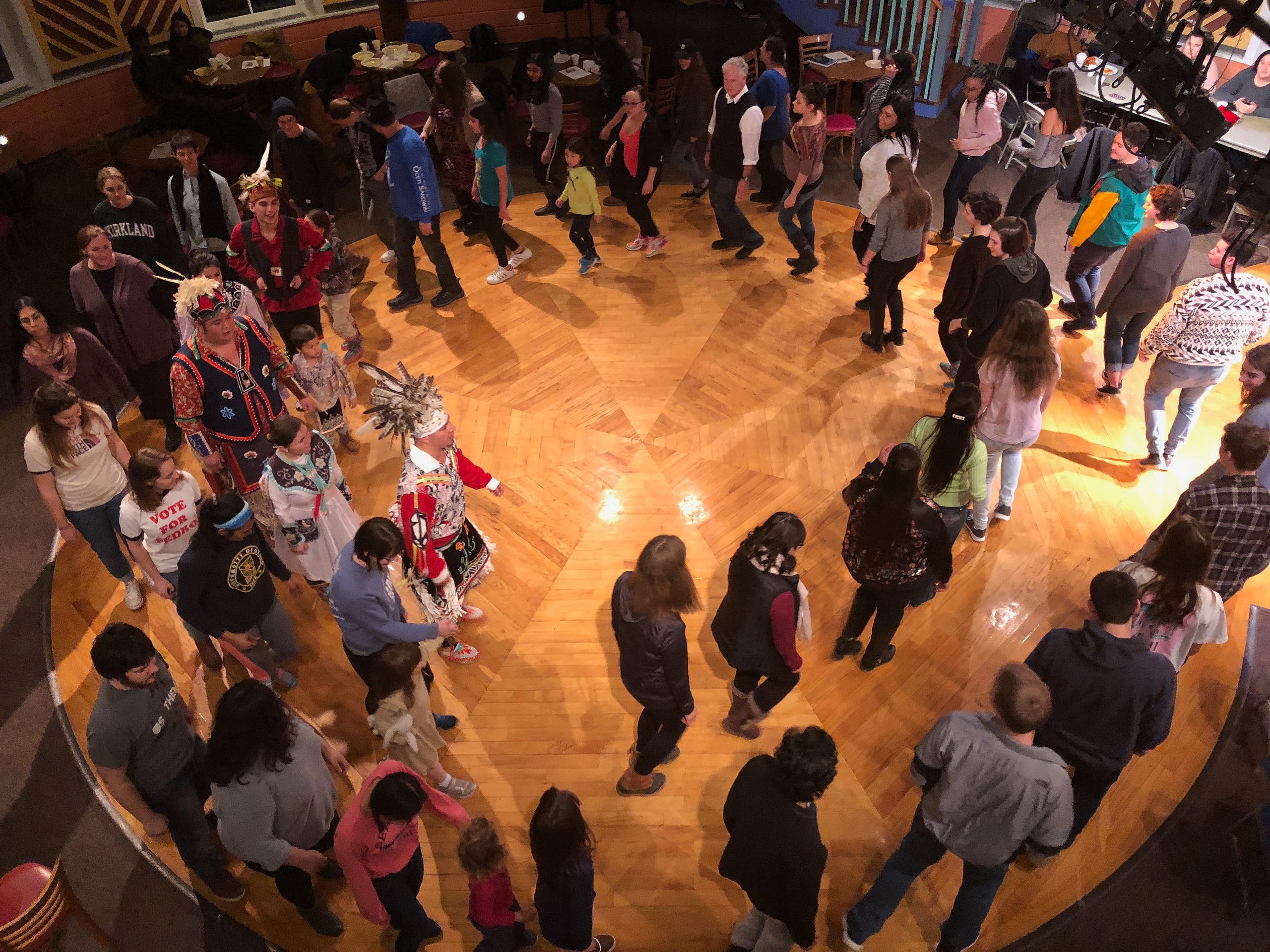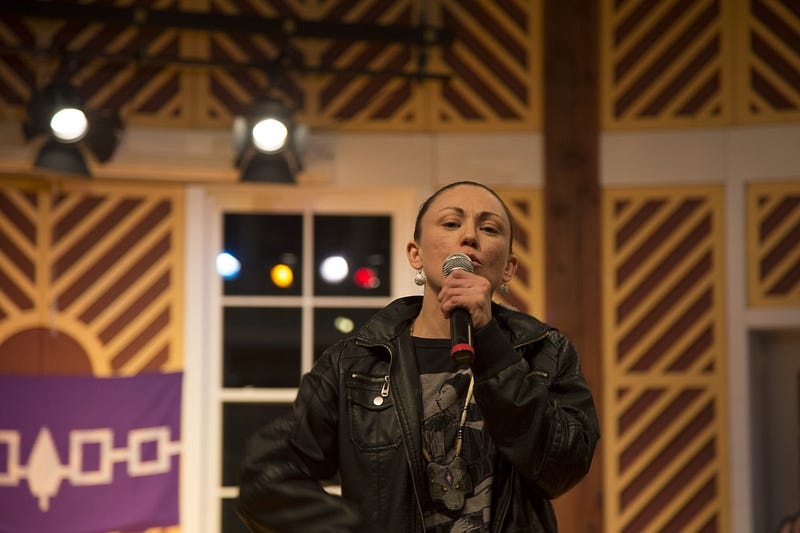
In a night filled with interactive dances, culturally rich music, thought-provoking historical stories, and some delicious food, nearly 100 attendees gathered together on Jan. 27 to witness the first traditional American Indian Social Dance performed on campus, followed by a rap performance from an Oneida Nation rapper Daygots. Organized by the Shenandoah-Kirkland Initiative (SKI) and sponsored by Student Assembly and the Chaplaincy, the event gave members of the Oneida Nation and Hamilton community a chance to communicate with one another and celebrate this long- awaited occasion.
SKI was founded in the fall of 2016 by Christina Florakis ’19 and Lily Pieper ’18, who are still active participants and members of the group’s e-board. They were inspired to create the organization due to the troublesome history behind the college, recalling the unfulfilled promise made over 200 years ago when the college was first founded. Missionary Samuel Kirkland had initially agreed with Chief Skenandoah of the Oneida Indian Nation that the school would be a way for members of the two groups to live with and learn alongside one another. With the Oneidas having since been overlooked, SKI hopes to now revitalize this relationship.
Having attended Social Dances on the Oneida Reservation before, the members of SKI wanted to bring a similar program to share with the campus community, encouraging students of Hamilton to learn about the Oneida Nation. “The idea came from a visit from Kandice Watson, who came on campus to discuss Native Mascots and has worked with the Oneida government, and mentioned that we could have per- formers come on campus. We had gone to similar Social Dances on the Oneida Reservation where we had first been introduced to this type of event […] [Our event] was also a way to reciprocate thanks to the community for allowing us to visit their events multiple time,” said SKI President David Gagnidze ’20.
Elder speakers Brian Patterson and Sheri Beglen began the dinner as they each shared their thanks to the attendees. Patterson said, “It is a pleasure to engage in this evening activity, as it really means a lot for our Oneida people to come and share our ways of living, small glimpses into our Oneida culture, and rich heritage.” Especially with the historical connection that Hamilton has with the Oneida people, Patterson commented that he hoped the relationship would continue to flourish.

Consequently, rapper and music producer Daygot Leeyos Edwards took the stage to perform a series of songs that were all inspirational, thought-provoking, catchy, and more. A great amount of her lyrics focused on her cultural history and heritage, such as “Nothing to Prove,” which consisted of the lines: “My voice matters; I represent my people everywhere I go / Oneida Nation, born and raised, on the smallest reservation / I’m a product of self- determination with odds against my ancestors who stayed to protect these homelands.” She also rapped songs that focused more on self- empowerment, such as “DANCE!” where she repeated the lyric: “This is your chance to free yourself / the world is your dance floor.”
Dancers Chris Thomas, Adah Shenandoah, Wes Fawkin Slay, and Monique Powless then introduced themselves to the crowd and performed a set of dances that each came with their own historical background. Attendees looked on at the leaders’ demonstrations before excitedly joining the dances themselves.
The dancers then spent time discussing the history behind the instruments they used and the attire they chose to wear. Some examples included using a water drum, which has a bit of water poured into a hollowed tree which changes in pitch depending on the water’s position, as well as wearing the feathers and colors of multiple birds because of the Oneida’s close relationship with birds.

With the success of the event, having garnered participants from both on and off the campus community, SKI hopes to host similar programs where there can be greater connections fostered between Hamilton and the Oneida Indian Nation.
“[The program was] vital because it is the first time in Hamilton’s history, as far as I am aware, that traditional Haudenosaunee (Iroquois) dance was held on campus. Not only that, but it raises general awareness about American Indians and the issues facing the Native community, a topic that does not get nearly enough of the attention that it should,” Gagnidze expressed.
“And it is one of the best ways to show to the Oneida that they are welcomed on this campus, which sits on their historic homeland. Due to the tense relationship Hamilton has had with our neighbors, it is of utmost importance that such an event take place on campus, and this was exactly that.”

















